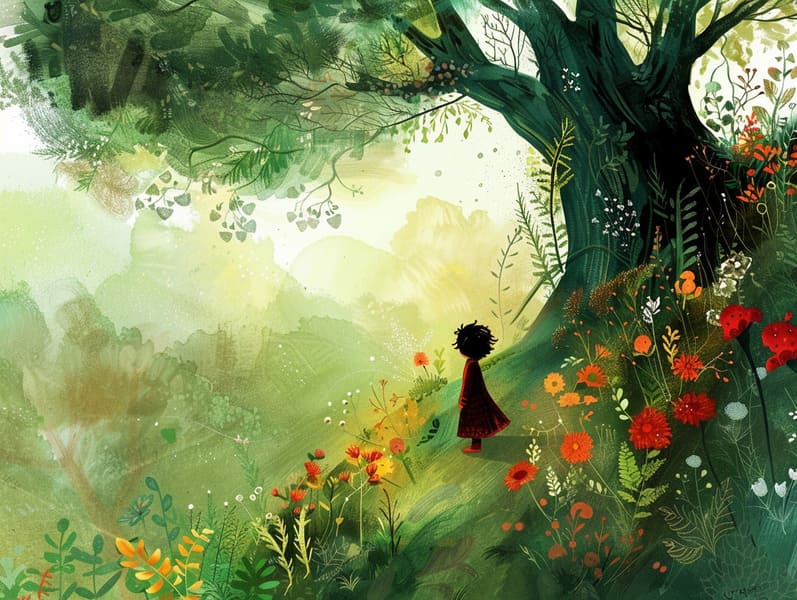
Popular fairy tales have ancient roots. These tales have been conveyed from one generation to the next centuries before they were ever transcribed. They arose from a variety of societies, including Eastern traditions. They were initially shared among older generations, often carrying themes and messages mirroring the societal norms and beliefs of the time.
The renowned Brothers Grimm, Jacob and Wilhelm, were among the first to compile many of these beloved tales. Their compilation, "Grimm's Children's Stories," included tales like "The Story of Cinderella," "Little Brother and Little Sister," and "The True Story of Snow White," which have since become staples in the world of iconic fairy tales. Similarly, Hans Christian Andersen's enchanting fairy tales, such as "The Story of the Little Mermaid," and "The Duckling that Could," have enchanted hearts worldwide, ensuring their place in the pantheon of beloved fairy tales.
Though they are centuries old, traditional fairy tales remain as significant as ever, especially as children's bedtime stories. These enchanting tales are now available in many formats, including richly illustrated books, magical animations, and internet fairy tales.
Their enduring popularity can be traced to several charming aspects:
Important Morals: Ancient fairy tales often impart important moral lessons. Stories like "The Wolf and the Liar" teach the significance of truthfulness, while "The Hare and the Tortoise" stress the qualities of tenacity and unpretentiousness. These stories offer kids clear distinctions between good and bad, shaping their moral compass in a mild yet significant way.
Empathy and Awareness: Fairy tales frequently illustrate protagonists facing challenges and struggles, stimulating young readers to empathize with their struggles and root for their triumphs. For instance, "Beauty and the Beast" teaches us the virtue of appreciating inner worth to appreciate the inner self of a individual, enhancing kindness and insight.
Cultural Understanding: Many ancient fairy tales are steeped in the cultural contexts from which they came. Immersing in these stories can provide delightful insights into different beliefs, cultivating a sense of cultural respect and recognition.
Creativity and Fantasy: The mythical elements in fairy tales—mythical entities—invigorate children’s dreams. These narratives carry readers to enchanted realms, inspiring imaginative thinking and a sense of curiosity that remains a lifetime.
Traditional fairy tales are not only entrancing but also instructive. They function as bewitching tools in fostering various mental and emotional abilities in young readers. When classic fairy tales are told out loud, they develop communication skills by presenting new lexicon and sophisticated sentence structures. This practice also cultivates hearing abilities and mental focus, as the young concentrate deeply, anticipating to see what happens next.
Furthermore, deliberating the themes and characters of fairy tales can improve evaluative skills and critical thinking. The young are educated to detect patterns, expect results, and grasp cause and effect. These discussions also facilitate young readers speak out their thoughts and feelings, advancing their emotional intelligence.
In today’s high-tech era, the abundance of web-based fairy tales has made these tales more acquirable than ever. Online resources and applications make available broad selections of popular fairy tales that can be read or heard anytime, anywhere. Fairy tales spoken are particularly sought after, presenting an charming way for young ones to take part in these alluring stories. Spoken stories and read-aloud videos take characters and settings to life, often augmented by spellbinding sound effects and musical scores that enhance the tale experience.
The enduring charm of ancient fairy tales lies in their ability to shift to modern society while retaining their central values. Contemporary renditions of these tales often include more representative protagonists and modern settings, making them meaningful to today’s audience. However, the core values of guts, kindness, and honesty remain unchanged, continuing to influence kids of all ages.
Classic fairy tales also offer a sense of ease and recognition. They put out a coherent narrative with a distinct beginning, middle, and end, often finishing with the solving of conflicts and the triumph of righteousness over wickedness. This uniformity can be placating for young readers, extending a sense of consistency in an inconstant world.
Old fairy tales continue to entrance and edify new generations, maintaining their grace and meaningfulness in modern society. As bedtime stories for kids, they share a perfect blend of fantasy and learning, backing moral values, empathy, and creativity. The existence of online storybooks and the well-received status of fairy tales recited confirm that these classic narratives remain obtainable to new generations.
By maintaining and recounting these fairy tales, we continue to recognize the rich tapestry of mythology and cultural heritage. Whether you are accessing a gorgeously illustrated book, awesome site enjoying a virtual library, or listening to an narrated book, the enchantment of classic fairy tales is always within reach. These fairy tales convey of the steadfast presence of storytelling and its ability to draw us together across centuries and lands.
Even if you are experiencing a richly illustrated book, perusing a internet library, or listening to an audio story, the grandeur of timeless fairy tales is always within reach.
These stories emphasize of the unwavering nature of storytelling and its ability to link us across eras and regions, establishing a link that charms and informs alike.